#Experience Sri Lanka
Text
Sri Lanka Rundreisen | Fascination Sri Lanka
Sri Lanka's Cultural Treasures and Highlands!
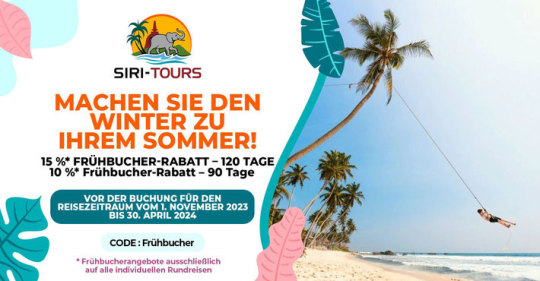
Sri Lanka Rundreisen offer diverse adventures in a compact island. Explore ancient temples, pristine beaches, lush jungles, and vibrant culture on these enriching journeys.
Visit Srilanka-Reisen today and experience the beauty and culture of island tours!
#Sri Lanka Rundreisen#Sri Lanka Tour#Sri Lanka Culture#Experience Sri Lanka#Fascination Sri Lanka#Sri Lanka Classic
1 note
·
View note
Text

Embark on an unforgettable journey with our curated guide to the most captivating honeymoon destinations in Sri Lanka. From the pristine beaches of Bentota to the lush greenery of Ella, immerse yourselves in the romance of this exotic island paradise. Indulge in intimate moments amidst the ancient ruins of Polonnaruwa or lose yourselves in the tranquillity of a tea plantation in Nuwara Eliya. Let Sri Lanka be the backdrop to your love story. Explore now!
#Sri Lanka honeymoon destinations#Romantic getaways in Sri Lanka#Honeymoon spots in Bentota#Ella honeymoon experiences#Polonnaruwa ancient ruins romance#Nuwara Eliya tea plantation retreats
0 notes
Text
A Warm Getaway: Exploring a Cozy Heritage Village Near Sigiriya
Hello and welcome to Salma’s Nook! In our last rendezvous, I shared the excitement of scaling the heights of Lion’s Rock in Sigiriya, Sri Lanka. Today, join me on yet another adventure, this time to a hidden gem near Sigiriya – a heritage village straight from the pages of a storybook.
Our journey commenced with the endearing quirkiness of a Tuk Tuk ride. A favored mode of transportation by our…

View On WordPress
#Culinary Adventure#Cultural Experience#Exotic Birds#family travel#Heritage Village#Lion&039;s Rock#Pristine Lake#Sigiriya#Sri Lanka#Sri Lankan Cuisine#Travel Bucket List#Tuk Tuk#UNESCO
0 notes
Text
Benefits Of Taking The Time To Choose the BEST Travel Bag.
Travelling is an exciting and enriching experience that opens us up to new cultures, landscapes, and adventures. Whether you are embarking on a short weekend getaway or a long-haul international trip, one essential aspect that can significantly impact your journey is the choice of the travel bag. Investing time in selecting the best travelling luggage bags in Sri Lanka for your needs can bring forth a plethora of benefits that will enhance your travel experience in numerous ways. In this article, we delve into the advantages of taking the time to choose the best travel luggage in Sri Lanka.
Comfort and convenience.
One of the primary benefits of opting for the best travel bags in Sri Lanka is the comfort and convenience it provides. Sri Lanka travelling often involves navigating through airports, train stations, and crowded city streets, which can be physically demanding. A well-designed bag with ergonomic features, such as padded shoulder straps, adjustable handles, and back support, can significantly reduce the strain on your body during long walks or while carrying your belongings for extended periods. It allows you to maintain good posture and alleviate discomfort, making your experience more enjoyable and less taxing on your body.
Versatility and adaptability.
The best travel bags online are often versatile and adaptable, accommodating various styles and situations. Whether you are backpacking through remote areas, exploring metropolitan cities, or going on a leisurely vacation, a thoughtfully chosen bag can cater to different scenarios. For instance, a convertible backpack that can transform from a traditional backpack to a duffel bag or even a rolling suitcase offers flexibility as your requirements change. This adaptability allows you to seamlessly transition between different modes of transportation and diverse activities, ensuring you are well-prepared for any adventure that comes your way.
Durability and longevity.
Quality bags are built to withstand the rigours of voyage. When you invest in a durable bag made from high-quality materials and reinforced stitching, you can rest assured that it can handle rough handling by baggage handlers, exposure to different weather conditions, and constant packing and unpacking without showing signs of wear and tear. A well-constructed bag will accompany you on numerous journeys, becoming a reliable companion for your adventures over the years. Choosing a bag with a trusted warranty further adds to its longevity, as reputable brands often stand by their products and offer repair or replacement services in case of any defects.
Security and Protection.
When you are on the road, the security of your belongings becomes paramount. The best bags come equipped with advanced security features that provide peace of mind during your journeys. Lockable zippers, RFID-blocking pockets, and slash-resistant materials are some of the security measures incorporated into modern bags to safeguard your valuables from theft and unauthorised access. Additionally, specialised padding and protective compartments can shield delicate items like laptops, cameras, and electronic devices from accidental damage during transit. Knowing that your belongings are safe and protected allows you to focus on enjoying your journey without worrying about potential theft or damage.
Efficient Packing and Space utilisation.
Packing efficiently is an art, and the right bag can make a significant difference. Many high-quality bags are designed with ingenious packing systems that maximise space utilisation. They may include compression straps, dividers, and packing cubes, enabling you to neatly organise your belongings and fit more into a compact space. Efficient packing not only saves time but also prevents overpacking, which can lead to excess baggage fees and unnecessary hassle. With a well-organised bag, you can easily locate items without having to rummage through your belongings, streamlining your experience and reducing stress.
Lightweight Travel Experience.
Travelling with heavy luggage can quickly become a burden, hampering your mobility and overall experience. Opting for a lightweight yet sturdy bag allows you to carry more essentials without adding excessive weight to your shoulders or back. Lightweight bags are particularly beneficial for those who prefer to trek with carry-on luggage only, avoiding the need to check bags and reducing the risk of lost luggage. Moreover, lightweight bags are easier to lift and manoeuvre, making your journey through airports or up staircases much more manageable.
Reflecting Personal Style.
Travel bags come in a myriad of designs, styles, and colours. Choosing the best bag lets you reflect your personal style and preferences. Whether you prefer a sleek and minimalist design, a rugged outdoor backpack, or an elegant leather duffel, the bag you choose becomes an extension of your personality and adds a touch of flair to your ensemble. Expressing your style through your bag allows you to feel more confident and comfortable during your journeys, enhancing your overall experience.
Sustainable Travel Choice.
Sustainability and environmental consciousness are becoming increasingly important in the world of travel. Many manufacturers are now producing eco-friendly and sustainable bags using recycled materials or ethically sourced fabrics. By selecting a bag from such brands, you can contribute to reducing your carbon footprint and promoting responsible travel. Additionally, choosing a durable and long-lasting bag reduces the need for frequent replacements, which ultimately reduces waste and the demand for new products.
Cost-Effectiveness.
While investing in a high-quality bag may require a slightly higher upfront cost, it can prove to be a cost-effective choice in the long run. Cheaper, lower-quality bags may wear out quickly, leading to frequent replacements that accumulate expenses over time. On the other hand, a well-chosen, durable bag is an investment that serves you well for years, saving you money on replacements and repairs. Furthermore, some premium bags offer added features and functionalities that can eliminate the need for additional accessories, such as packing cubes or locks, saving you money in the long term.
In conclusion, the benefits of taking the time to choose the best bag are multifaceted and far-reaching. A well-chosen bag provides comfort, convenience, and adaptability, ensuring that you can navigate your journeys with ease and style. Its durability and security features protect your belongings, offering peace of mind during your adventures. Moreover, efficient packing and lightweight designs enhance your experience, making your trips more enjoyable and hassle-free.
When choosing a bag, it is essential to assess your specific needs, preferences, and the types of journeys you undertake. By investing in a quality bag that aligns with your requirements, you set the foundation for a more comfortable, organised, and memorable experience, allowing you to focus on the joy of exploring new destinations and creating cherished memories along the way. Whether you are a frequent explorer or an occasional adventurer, a well-considered bag becomes an indispensable companion on your journey, making every trip a seamless and delightful experience.
#Travelling is an exciting and enriching experience that opens us up to new cultures#landscapes#and adventures. Whether you are embarking on a short weekend getaway or a long-haul international trip#one essential aspect that can significantly impact your journey is the choice of the travel bag. Investing time in selecting the best trave#we delve into the advantages of taking the time to choose the best travel luggage in Sri Lanka.#Comfort and convenience.#One of the primary benefits of opting for the best travel bags in Sri Lanka is the comfort and convenience it provides. Sri Lanka travellin#train stations#and crowded city streets#which can be physically demanding. A well-designed bag with ergonomic features#such as padded shoulder straps#adjustable handles#and back support#can significantly reduce the strain on your body during long walks or while carrying your belongings for extended periods. It allows you to#making your experience more enjoyable and less taxing on your body.#Versatility and adaptability.#The best travel bags online are often versatile and adaptable#accommodating various styles and situations. Whether you are backpacking through remote areas#exploring metropolitan cities#or going on a leisurely vacation#a thoughtfully chosen bag can cater to different scenarios. For instance#a convertible backpack that can transform from a traditional backpack to a duffel bag or even a rolling suitcase offers flexibility as your#ensuring you are well-prepared for any adventure that comes your way.#Durability and longevity.#Quality bags are built to withstand the rigours of voyage. When you invest in a durable bag made from high-quality materials and reinforced#you can rest assured that it can handle rough handling by baggage handlers#exposure to different weather conditions#and constant packing and unpacking without showing signs of wear and tear. A well-constructed bag will accompany you on numerous journeys#becoming a reliable companion for your adventures over the years. Choosing a bag with a trusted warranty further adds to its longevity#as reputable brands often stand by their products and offer repair or replacement services in case of any defects.
0 notes
Text
Paddy Field Tour in Sri Lanka: An Unforgettable Experience : Ampara
Sri Lanka is a beautiful country with a rich history and culture. One of the best ways to experience Sri Lanka is by taking a paddy field tour. Paddy fields are the rice fields that are found all over Sri Lanka. They are a beautiful sight to behold, and they offer a glimpse into the traditional way of life in Sri Lanka.
There are many different paddy field tours available in Sri Lanka. You can…

View On WordPress
#beauty of Sri Lanka&039;s countryside#beauty of Sri Lanka&039;s paddy fields#Paddy Field Tour in Sri Lanka#traditional way of life in Sri Lanka#unforgettable experience
0 notes
Text

Scientists Pinpoint Cause of Severe Morning Sickness (Azeen Ghorayshi, The New York Times, Dec 13 2023)
"More than two-thirds of pregnant women experience nausea and vomiting during the first trimester.
And roughly 2 percent of women are hospitalized for a condition called hyperemesis gravidarum, which causes relentless vomiting and nausea throughout the entire pregnancy.
The condition can lead to malnutrition, weight loss and dehydration.
It also increases the risk of preterm birth, pre-eclampsia and blood clots, threatening the life of the mother and the fetus.
Perhaps because nausea and vomiting are so common in pregnancy, doctors often overlook hyperemesis, dismissing its severe symptoms as psychological, even though it is the leading cause of hospitalization during early pregnancy, experts said.
Although celebrities like Kate Middleton and Amy Schumer have raised the condition’s profile in recent years by sharing their experiences, it remains understudied.
“I’ve been working on this for 20 years and yet there are still reports of women dying from this and women being mistreated,” said Dr. Marlena Fejzo, a geneticist at the University of Southern California Keck School of Medicine and a co-author of the new study.
She knows the pain of the condition firsthand.
During her second pregnancy, in 1999, Dr. Fejzo was unable to eat or drink without vomiting.
She rapidly lost weight, becoming too weak to stand or walk.
Her doctor was dismissive, suggesting she was exaggerating her symptoms to get attention.
She was eventually hospitalized, and miscarried at 15 weeks. (…)
The researchers found that women experiencing hyperemesis had significantly higher GDF15 levels during pregnancy than did those who had no symptoms.
But the hormone’s effect seems to depend on the woman’s sensitivity and exposure to the hormone before pregnancy.
The researchers found, for example, that women in Sri Lanka with a rare blood disorder causing chronically high levels of GDF15 rarely experienced nausea or vomiting in pregnancy.
“It completely obliterated all the nausea. They pretty much have next to zero symptoms in their pregnancies,” said Dr. Stephen O’Rahilly, an endocrinologist at Cambridge who led the research.
Dr. O’Rahilly hypothesized that prolonged exposure to GDF15 before pregnancy could have a protective effect, making women less sensitive to the sharp surge in the hormone caused by the developing fetus. (…)
The new study is powerful because it offers genetic proof of a causal relationship between GDF15 and the disease, said Dr. Rachel Freathy, who is a geneticist at the University of Exeter and was not involved in the study.
That will help the condition gain greater recognition, she said.
“There is kind of an assumption made by many people that women should just be able to cope with this,” Dr. Freathy said.
With this biological explanation, she said, “there will be more belief that this is a real thing rather than something in somebody’s head.”"
529 notes
·
View notes
Text




(described in alt text)
sat on these ones a while before deciding to post them
these are paintings of photos I took on my trip to sri lanka back in 2022/2023 in various states of finishedness. i wanted to experiment with my brushes and try evoking the feelings I felt when I took them, especially the field one, which i think I managed!
#my art#landscapes#sri lanka#sunsets#artists on tumblr#aurrie's art#man i am bad at tagging my own stuff
83 notes
·
View notes
Text
Everything You Need to Know About Crystals: Moonstone (White)
Moonstone (The Sacred Stone of the Moon)
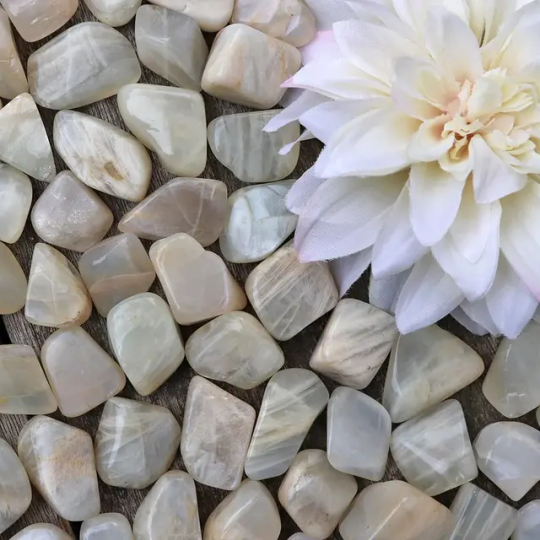


Color: White, cream, yellow, blue, green
Rarity: Easy to obtain
Hardiness: 6.5
Type: Oligoclase/ Feldspar
Chakra Association: Brow, Heart, Root, Third Eye, Sacral, Solar Plexus
Deities: All Lunar Deities, Diana, Selene, Artemis, Isis, Chandra
Birthstone: June
Astrological Signs: Cancer
Element: Water
Planet: Moon
Origin: Australia, India, Myanmar, Sri Lanka, USA
Powers: Femininity, Calmness, Balance, Luck, Intuition, Healing, Sensual, Patience, Reproductive Health
Crystals It Works Well With: Aquamarine, garnet, pearl
How It is Created: Moonstone is a type of feldspar composed of potassium aluminum silicate. It can be found in a number of colors, but all examples demonstrate a particular sheen known as labradorescence; an effect also found in labradorite and blue moonstone. Labradorescence is a light effect caused by parallel hairlike structures laid down within the crystal matrix, which reflect light back and forth, creating different-colored effects, including blue, yellow, silvery gray, and white.
History: Moonstone is the sacred stone of India. During the earliest traditions, the gem was said to have been embedded in the forehead of Ganesh, the four-handed god of the moon, since the beginning of time. It was written in Hindu mythology that moonstone is made from moonbeams, thus its luster.
The magnificent gem is never displayed outside for sale unless placed on a yellow cloth, as yellow is a sacred color. According to other legends, Moonstone can give gifts of prophecy and clairvoyance to the wearer. It could also clear the mind for the wearer to welcome wisdom. But to unlock this ability, Moonstone must be placed in their mouths during the full moon. Since ancient Egypt it is considered as a spiritual stone as it is seen as the gem of protection for night travelers.
Since Moonstone looks a lot like the moonshine, ancient Romans believed that it was formed from moonlight. If you look at the gem closely, you’ll see a dance of light that lurks on the insides of the gem. Ancient Greeks merged the names of the goddess of love (Aphrodite) and the goddess of the moon (Selene) and christened Moonstone as “Aphroselene”. While the Romans believed that the gem exhibits the image of their moon goddess, Diana.
It is also known as an aphrodisiac and when worn by two people, they will fall passionately in love when the moon is high. Moonstone was once called the “Travelers Stone” as it is said to protect those who travel at night, especially at sea.
What It Can Do:
When worn, can attract true love and arouse passion
If you give your lover a moonstone during the full moon, there will be passion between you always
Can settle disagreements and return things to peaceful status
Sewn into garments can enhance fertility
Wearing moonstone protects sensitive emotions
Enhances divination, prophetic dreams and prevents nightmares
Great for meditation and scrying
Represents yin and attracts peaceful energy
Protects travelers at night and by sea
Considered good luck
Balances male-female energies and aids men who want to get in touch with their feminine side
Affects the female reproductive cycle and alleviates menstrual-related diseases and tensions
Helps with digestive and reproductive systems, assimilates nutrients, eliminates toxins and fluid retention, and alleviates degenerative conditions of the skin, hair, eyes and fleshy organs such as the liver and pancreas.
How to Get the Best Out Of: Wear as a ring or place on the appropriate body part, would recommend the forehead, for spiritual experiences, and solar plexus or heart for emotions. Women may need to remove Moonstone at full moon.
How to Cleanse and Charge: Moonstone is relatively soft stone, 6 on the Mohs scale, so it should be handled with care as it can be easily scratched or crushed. Moonstone should be stored separate from other jewelry in its own soft bag or lined box and should not be worn while performing strenuous tasks that could result in it getting bumped or scratched. It can be cleaned with plain water and a soft cloth. If it gets scratched, take it to a jeweler to have it polished out.
Charge your moonstone in the light of the waxing moon and keep it out of direct sunlight.
Crystal Grid: N/A Couldn't find one that wasn't too complex @_@
Sources
#moonstone#witchblr#witch community#witchcraft#occulltism#paganblr#gemstone#crystal witch#crystals#witchcraft 101#witchcraft resources#geology#lunar#lunar witch#nature#geology rocks#rocks#samhain
330 notes
·
View notes
Text
map to my heart.


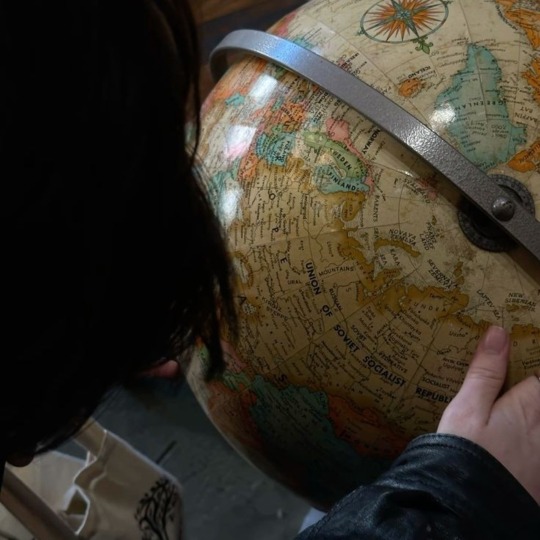
pairing: wong hendery x reader
length: 1.06k
tags: alternative universe, university/college au, friends to lovers, indirect confession, mutual attraction, tooth-rotting fluff, best friend! hendery, assistant librarian!reader, based on true experience.
note: i was inspired by a conversation i had with my ex-crush when i was with them in the library where our lesson on a subject took place

"how well do you know your geography?" hendery's voice was gentle and low, keeping himself quiet in the back of the library with students who cannot be disrupted.
he watched you looking at the library globe before your eyes met with his. after finishing an activity that his professor had given him, he was able to freely look around, and there he saw you at the back with the globe you were spinning at a slow place. it was a fortunate meeting, knowing how well you often visit the library since you were an assistant in helping the librarian after all.
“do you know your geography?”
this time, you returned the same question to him, and of course he knew. he just wanted to test how good you were, and with a smile on his face, he responded. “of course, would you like a challenge?”
“i'm down,” hendery loved how there was no hesitation in your tone, and he especially loved your competitiveness when it comes to interests you both have in common. “only because i can totally win over you.”
“oh? really?” his hand made its way to touch the globe, preparing himself for a little game of spotting the country. “give me a name, then.”
“laos.” you said, and he smiled at you.
“easy,” he began spinning the globe in front of him, looking for the location you had asked him to find. “if you know countries from asean very well, then there's no difficulty in searching for it.”
pausing the sphere, hendery's forefinger pointed to the land just above thailand before he gave you a victorious grin. “see? now try looking for sri lanka for me.”
he heard you let out a huff, watching you already turning the spherical ball, and when you showed him that you had already spotted it, he gave a fake sound of a terrible whine which almost made you laugh. covering your mouth with your palm, your other hand made its way to his arm with a light smack. both of you suppressed a laugh, knowing how much they could get in trouble if they ever disturbed the library, with him being thrown out and you enduring another scolding session from the librarian.
“you really should stop making weird noises if you don't want to be thrown out from here.” giggling in a whisper, he couldn't help but fall in love with the way you beamed at him.
hendery was so, so in love with you.
he moved to stand beside you with his head leaning closer to your ear, saying, “shoot me a name, sweetie.”
you hummed, pretending to think for a little long time. gazing over your hand ghostly touching his knuckles, the little butterflies flew around inside his stomach. the fingertips of your hands running over his then the surface of the globe before he heard you utter out, “cyprus.”
nodding to your next challenge, he made his way to look thoroughly around the ball. a chuckle left his lips, feeling as if he was starting to sweat despite the cold breeze of the air-conditioned room. “maybe i’m reconsidering your knowledge on geography, after all.” your voice softly echoed in his ears. he wasn’t going to give up so easily for some country he wasn’t familiar with.
continuing to search, he whispered to you, “from what i remember, it’s close to romania, am i right?”
“close.”
hendery droned out a steady continuous sound, staring at the map of europe in front of him. if it was close to what he stated earlier, and the name sounds close to some greek mythology name. “then i'm guessing it would be near greece, so…”
forefinger gliding through the map, he eventually found cyprus below turkey. another victorious win, he smiled at you. “there.”
“you’re not as bad as i thought.” your compliment had earned him another good slap in the heart, and it would always make him do somersaults every time you do. with the way you look at him like that, with that contagious smile and laughter, he could never stop feeling things for you.
“okay, my turn.” you said, “give me a name.”
“show me…” hendery trailed off, his body moving backwards to face your back. watching you turn around, you let out a small gasp as you were taken aback when he caged you in between his arms. “hendery, what are you doing?”
“show me where the map to my heart is.” his voice was serious, and yet there was still a glint of delight in his tone. the smile never wiped off from his face while he stared into your eyes. sure, it was abrupt and unexpected, but he wasn't being playful in a way that would annoy you, and his seriousness was giving a turn.
“i…” now you were the one who was tongue-tied, and him being the patient person he was, he waited for you to respond. it was simple, if you reject him at this time and moment, he would respect that and back off this instant.
"the question is just simple," without wiping the smug off his face, he let out a fake yawn that is not loud enough to disturb the other students in the library at the front. "show me where it is." with the way he carefully and audibly emphasized each word, you started to laugh in such a nervous state.
"a-are you joking right now?"
"huh, what's that?" he brought his hand to his ear, pretending to not hear you despite being a short distance away from you. that smile of his never dropped.
“sweetie if you're just gonna stand there and stare at me then i might as well win this challange—”
“i think i know where it is.” you quickly uttered out, breaking your silence. he was curious to know what was on your mind, and so he crossed his arms against his chest, lips curling up to put up a smug look.
“really? i'm curious to see if you actually know it.”
“well, if i can remember, it starts from here…”
he observed the way your finger reached out to point your own chest where your heart is at rest before making out a line until your palm was against his chest to his beating heart. hendery sucked up a good amount of air at the contact, his gaze still never left yours.
“...to here.”
©MEIIDERYZ 2024. ALL RIGHTS RESERVED.
#wayv#wayv fanfic#wayv imagines#wayv fluff#wayv x reader#wayv scenarios#wayv drabbles#wayv au#hendery#wong hendery#wong kunhang#hendery fanfic#hendery imagines#hendery fluff#hendery scenarios#hendery drabbles#hendery au#hendery x reader#nct#nct hendery#nct fanfic#nct imagines#nct fluff#nct x reader#nct drabbles#nct scenarios#nct au
116 notes
·
View notes
Text
Because most medicines were produced from [...] plants [...] these early “pharmaceutical monopolies” required full control of the production and trade of a species. Russia successfully managed the rhubarb trade in the seventeenth and eighteenth centuries, while Spain controlled the distribution [...] from Spanish America, mainly cinchona from Peru, in the same period. “True” cinnamon grew only on Sri Lanka, so whoever controlled the island could dominate the cinnamon trade. The Portuguese were the first to create a monopoly on the cinnamon trade there in the early seventeenth century. That monopoly was later optimized by the Dutch in the late eighteenth century [...].
“True” should indeed be in quotation marks here - the term reflects the historically contingent tastes of Europeans, rather than any botanical category [...]. The rarity of cinnamon in the early modern period made it one of the most coveted spices of that era, and European countries without direct access to the cinnamon trade tried to imitate, substitute, steal, smuggle, or transplant the “true” product from Sri Lanka. [...]
---
In the early modern period, cinnamon was also important both as an exotic commodity and as an important therapeutic substance. The Dutch East India Company (VOC), which controlled Sri Lanka between 1658 and 1796, was well aware of this. The VOC vigorously exploited the Salagama - [...] specialized Sri Lankan cinnamon peelers - to supply enough cinnamon, which for a long time was gathered from forests. Only after the peelers rebelled, leading to a war that lasted between 1760 and 1766, did the company revise its production policy.
Experiments with “cinnamon gardens” (kaneeltuinen in Dutch) led to enormous successes, and the company eventually grew millions of cinnamon trees on plantations in the final decades of the eighteenth century. Meanwhile, competitors of the Dutch had come up with their own solutions [...]: Spain had started growing other Cinnamomum species on plantations in the Philippines, while France and Britain succeeded in transplanting cinnamon to islands in the Caribbean. But the Dutch monopoly was not simply threatened by outside competition. Smuggling, by peelers or VOC personnel, was strictly forbidden and severely punished. [...]
---
Hendrik Adriaan van Rheede tot Drakenstein (1636–1691) was the VOC administrator on India’s Malabar Coast when he started experimenting with cinnamon oil in the 1670s.
He concluded that the oil, which he extracted from the roots of local cinnamon trees, was of better quality than oil from cinnamon trees on Sri Lanka. Van Rheede reported these results in his entry on cinnamon in volume 1 of the Hortus Indicus Malabaricus, the twelve-volume book that was produced by a team of local and European scholars, and supervised by Van Rheede himself.
Van Rheede’s assessment of cinnamon - in fact, the very publication of a multi-volume work about the flora of Malabar - infuriated the governor of Sri Lanka, Rijckloff van Goens, who had secured the cinnamon monopoly of Sri Lanka for the Dutch. Van Goens insisted that Van Rheede stop his medical experiments, claiming that the monopoly was at risk if the cinnamon trade was extended beyond the island of Sri Lanka.
But Van Goens was not so much concerned about the therapeutic efficacy of cinnamon from either of the two regions. He was motivated by an imperial agenda and regarded the natural products of Sri Lanka as superior to anything similar in the region.
The experiments of Van Rheede, who was his former protégé, threatened not so much the botanical quality of the product, or the commercial interests of the Dutch East India Company, but rather the central position of Sri Lanka in the Dutch colonial system and the position of Van Goens as the representative of that system.
---
Even when Sri Lanka still only produced cinnamon that grew in the wild, the Dutch harvested enough to supply an international market and were able to dictate the availability and price level throughout the world. The monopoly, whether defined in commercial or pharmaceutical terms, was not easily put at risk by efforts like Van Rheede’s. Those involved in the early modern cinnamon trade were motivated by various reasons to defend or undermine the central position of Sri Lankan cinnamon: botanical, medical, commercial, or imperial. These motives often overlapped.
---
All text above by: Wouter Klein. “Plant of the Month: Cinnamon.” JSTOR Daily. 17 February 2021. “Plant of the Month” series is part of the Plant Humanities Initiative, a partnership of Dumbarton Oaks and JSTOR Labs. [Bold emphasis and some paragraph breaks/contractions added by me. Presented here for commentary, teaching, criticism purposes.]
151 notes
·
View notes
Text
Train fact: NAMED TRAINS!
So you've probably heard of the Flying Scotsman. Big green thing, turned 100 this year, probably the most famous locomotive in the UK, if not the world. Adapted into Thomas the Tank Engine with a whole lot of charisma and eyebrows. But did you know that name wasn't hers originally?
'The Flying Scotsman' is actually the name (formerly a nickname) of the train. The locomotive is Flying Scotsman's monster named for it. She was given the name in 1924, to help promote said service at the British Empire exhibition. Any engine, with any rack of coaches, or any train set, can be the Flying Scotsman.
Right now, it's run by LNER's new Azumas, which get a special little outfit about it:
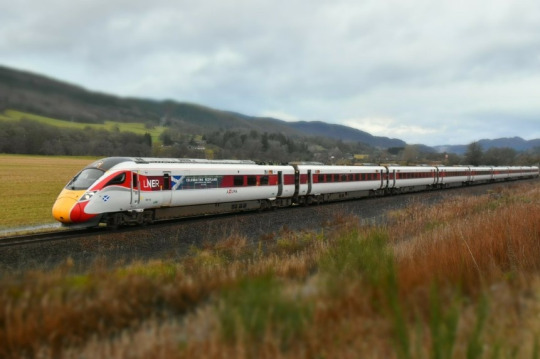

Most of the named trains in the UK were phased out with steam (although you can still catch the Sheffield continental from Sheffield to St. Pancras, or the Northern Lights from King's Cross to Aberdeen, among a handfull of others) but they live on elsewhere.
Some are luxury touring trains, like Japan's Seven Stars in Kyushu (left) or South Africa's Blue Train (right).


Transport isn't really the goal here. They sell out months in advance and cost anywhere from hundreds to thousands of dollars, depending on the class of ticket you get. They're an Experience, and a very cushy experience at that. Just look at their interiors!

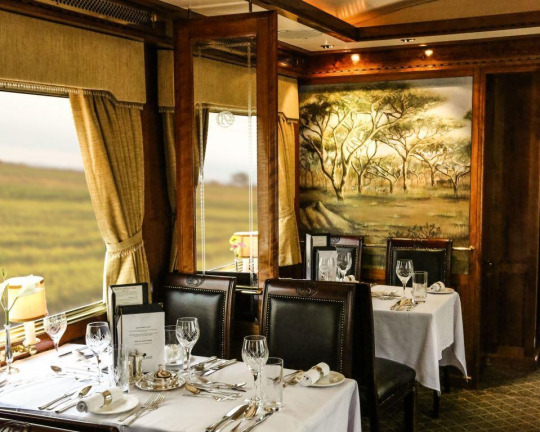
(yes, that's a piano)
But the vast majority of named trains in operation (as far as I can tell) are regularly-running exepress services across Asia.
Japan names their Shinkanens, India, Pakistan, Bengladesh & Sri Lanka often name their intercity expresses. These are practical, long-distance services, often named for monuments, like India's Ajanta Express, named for the Ajanta caves:
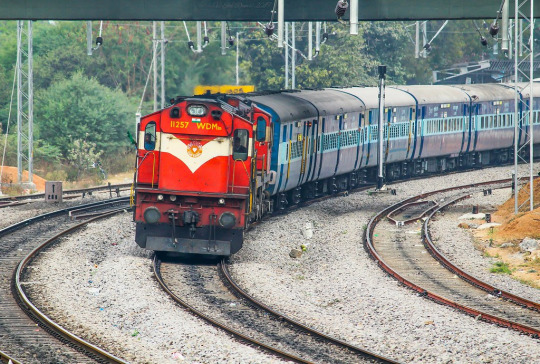
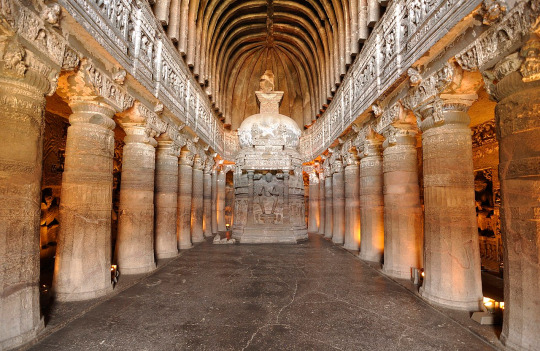
Or their operating regions, like Sri Lanka's උත්තර දේවී | Princess/Queen of the North:

Some North American countries also kept historic named routes, like Amtrak's Sunset Limited, or Canada's Ocean, which has operated continuously since 1904:

but my personal favorite named services are Australia's historically-nicknamed "The Fish", named after one of its drivers:

and the numerous trains that have been companion-nicknamed "The Chips" to match.
#Train facts!#ids in alt text#Sri Lanka Railways#LNER#modern LNER! Modern LNER! I know!#South Central Railway#Indian railways#NSW Train Link#via rail canada#the blue train#seven stars in kyushu#LNER Azuma
169 notes
·
View notes
Text
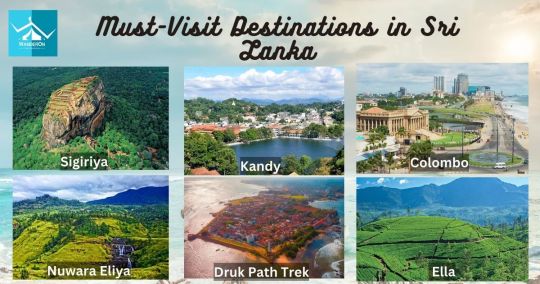
Embark on a journey through the mesmerizing landscapes of Sri Lanka in 2024. Uncover the nation's rich cultural tapestry and explore its hidden gems. From the pristine beaches of Mirissa to the ancient wonders of Anuradhapura, this guide unveils the 20+ best places to visit in Sri Lanka. Immerse yourself in the vibrant local life, savour exotic cuisine, and create lasting memories. Whether you seek adventure or tranquillity, these curated destinations promise an unforgettable Sri Lankan experience.
#Sri Lanka#travel#destinations#2024#cultural exploration#beaches#Mirissa#Anuradhapura#local life#cuisine#adventure#tranquillity#must-visit places#hidden gems#vibrant#unforgettable experience#Places to Visit in Sri Lanka#Sri Lanka Tourist Places
1 note
·
View note
Text

Disaster capitalism has taken many forms in different contexts. In New Orleans after Hurricane Katrina in 2005, there was an immediate move to replace public schools with charter schools, and to bulldoze public housing projects to make way for gentrifying townhouses. In Puerto Rico after Hurricane Maria in 2017, the public schools were once again under siege, and there was a push to privatize the electricity grid before the storm had made landfall. In Thailand and Sri Lanka after the 2004 tsunami, valuable beachfront land, previously stewarded by small-scale fishers and farmers, was seized by real estate developers while their rightful occupants were stuck in evacuation camps.
It’s always a little different, which is why some Native Hawaiians have taken to calling their unique version by a slightly different term: plantation disaster capitalism. It’s a name that speaks to contemporary forms of neocolonialism and climate profiteering, like the real estate agents who have been cold-calling Lahaina residents who have lost everything to the fire and prodding them to sell their ancestral lands rather than wait for compensation. But it also places these moves inside the long and ongoing history of settler colonial resource theft and trickery, making clear that while disaster capitalism might have some modern disguises, it’s a very old tactic. A tactic that Native Hawaiians have a great deal of experience resisting.
#maui wildfires#hawaiʻi#water use#capitalism#real estate development#profiteering#disaster capitalism#colonialism#natural resources
123 notes
·
View notes
Note
Would you mind sharing your views on backpacking? 👀
Take all of this with a grain of salt because I'm mostly just bothered by backpacking content on Instagram.
I think the concept is fine. I'd actually like to do some backpacking some time.
But backpacking content, as well as most overland* content, always has a really weird vibe. It almost feels like cosplaying poverty if you know what I mean??
It's almost always young people from the so called "West" and almost always they're somewhere in South or Southeast Asia. The most popular backpacking destinations I'm seeing at the moment are Bali (exclusively that part of Indonesia for some reason), Thailand, Vietnam and Sri Lanka. The algorithm has recently also started showing me content from Pakistan, India and Afghanistan.
Since flights to these destinations are usually quite expensive, and many of these people stay abroad long enough that they might need a visa and that accommodation and food would also add up, it can be safely assumed these people have a certain amount of financial stability. Some of them are full time influencers too.
And while travelling with a backpack instead of a suitcase makes sense, and while you want to have an "authentic" experience, the vibe on those videos is often sooooo weird.
They're always like "I just spent 45h standing in a cramped bus without AC because it was only $1. I'm sleeping on the floor of this abandoned building that costs me $4 a night. I only carry 2 t-shirts with me, can't find a laundromat and I'm travelling for 3 months. Yesterday I got scammed and got food poisoning."
And I'm like why are you doing this? Is it really more "authentic" just because it's a foreign country? You can find the same uncomfortable situations and people who live like that all the time in your home country, but when you're abroad it's cool and authentic and #humbling #eatpraylove. Meanwhile there's also people in that same country you're backpacking through who, like, have a comparable standard of living you're used to. Your holiday doesn't have to be luxury resorts but it also doesn't have to be absolutely god awful.
And of course there's also the factor of adrenaline and stepping out of your comfort zone but with these videos it seems like they're almost glamorising having an awful time in an "exotic" country because that's what it's supposed to be like? I guess?
Idk I feel like I should get the opinion of someone living in one of those backpacking hotspots to make sure I'm not just getting annoyed at nothing but I think the vibe is off.
*overland content as in "travelling from XY to YZ without flying - Day 420" type videos. They're often interesting and I follow some of those people and I actually have some ideas for cool overland or long distance train trips but some of the accounts also have a weird vibe. Most of the ones I saw were men and they're like hitchhiking through some desert somewhere and I'm like oh this would feel so unsafe to me as someone perceived female. And obviously they also make lots of content where you know they have lots money because they've been travelling for several months but it has that same fake low budget backpacker vibe.
I hope this makes sense. I'm not sure it does.
#Comparable standard of living as in no two places are the same#And climate and the overall economy of the country and so many other factors can make a difference to how people are living#But there are people in Vietnam Thailand etc who are just. You know. Leading a normal life. Who have comfortable flats.#There are also rich people everywhere obv#There are hotels and bnbs in every price range everywhere#There are cheap restaurants or street food stalls that locals also go to that won't give you food poisoning#I've never been to any of these countries but like logically#And based on what I've seen from other people#But backpacking content is always like omg these natives are so nice and humble 🥺#Asks
22 notes
·
View notes
Text
Buddhism: The Journey of the Mind and Spirit to Enlightenment

Buddhism is one of the world’s oldest and most influential religions and spiritual philosophies, with roots dating back to the sixth century BCE in India. Founded by the teachings of Siddhartha Gautama, the Buddha, Buddhism has spread throughout Asia and beyond, shaping the cultures, art, literature, and spiritual practices of many societies. More than a religion in the traditional sense, Buddhism offers a philosophical and ethical path to self-knowledge, detachment, and the pursuit of enlightenment. This article explores the origins, fundamental teachings, and lasting impact of Buddhism.
The Origins of Buddhism: The Life of Siddhartha Gautama
Siddhartha Gautama was born around 563 BCE in Lumbini, present-day Nepal, into a royal family. From an early age, he was sheltered from the painful realities of life, living in a palace surrounded by luxury. However, upon leaving the palace and seeing the suffering of the world—represented by the visions of an old man, a sick man, a corpse, and an ascetic—Siddhartha realized the impermanence of life and decided to abandon his privileged existence to seek an answer to human suffering.
After years of spiritual searching, Siddhartha practiced deep meditation, asceticism, and studied with various teachers, but it was under a fig tree, known as the Bodhi Tree, that he finally achieved enlightenment, becoming the Buddha, which means “The Awakened One.” He spent the rest of his life teaching the principles he discovered, offering a path to the cessation of suffering, known as the Eightfold Path.
The Fundamental Teachings of Buddhism
Buddhism is based on a series of teachings that seek to guide practitioners in understanding the nature of life and in the pursuit of enlightenment. Among the central tenets are the Four Noble Truths and the Eightfold Path.
The Four Noble Truths:
The Truth of Suffering (Dukkha): Life is permeated by suffering, dissatisfaction, and impermanence.
The Truth of the Origin of Suffering: Suffering is caused by craving and attachment, which lead to frustration and pain.
The Truth of the Cessation of Suffering: It is possible to overcome suffering through detachment and understanding.
The Truth of the Path to the Cessation of Suffering: The Eightfold Path is the practical route leading to liberation.
The Eightfold Path:
Right Understanding: Knowing the reality of the Four Noble Truths.
Right Thought: Cultivating the intention of renunciation, goodwill, and nonviolence.
Right Speech: Avoiding lies, slander, hurtful words, and idle talk. - Right Action: Behaving ethically, refraining from killing, stealing, or sexual misconduct.
Right Livelihood: Choosing an occupation that does not cause harm to other beings.
Right Effort: Striving to avoid negative thoughts and cultivating positive ones.
Mindfulness: Maintaining awareness of the body, feelings, mind, and phenomena.
Right Concentration: Practicing meditation to achieve higher states of mind and enlightenment.
Types of Buddhism: Diversity in Practices and Traditions
Buddhism expanded rapidly after the Buddha's death, dividing into several schools and traditions that reflected different interpretations of the original teachings.
Theravada (The Way of the Elders): Predominant in Southeast Asia (Thailand, Myanmar, Sri Lanka), this tradition closely follows the Buddha's original teachings, with an emphasis on monastic practice and meditation.
Mahayana (The Great Vehicle): With roots in China, Japan, and Korea, Mahayana emphasizes compassion and the path of the bodhisattva—one who seeks enlightenment not just for oneself but to help all beings.
Vajrayana (The Diamond Vehicle): Developed primarily in Tibet, it combines elements of Mahayana Buddhism with esoteric rituals and tantric practices to achieve enlightenment quickly.
Zen Buddhism: Originating in China (as Chan) and later developed in Japan, Zen focuses on meditation (zazen) and direct experience of reality, emphasizing simplicity and self-knowledge.
Buddhist Philosophy: Karma, Samsara, and Nirvana
Buddhism is not just a series of rituals, but a profound philosophy that addresses the nature of the mind and the universe. Central to this is the concept of karma – the idea that intentional actions, good or bad, generate consequences that shape the cycle of birth, death and rebirth, known as samsara. The ultimate goal of the Buddhist practitioner is to attain nirvana, a state of liberation and complete cessation of suffering.
Legacy and Influence of Buddhism
Buddhism’s impact has transcended religion, profoundly influencing the art, literature, politics and philosophy of many cultures. Buddhist monasteries were centers of learning, preserving sacred texts and
Legacy and Influence of Buddhism
Buddhism’s impact has transcended religion, profoundly influencing the art, literature, politics, and philosophy of many cultures. Buddhist monasteries were centers of learning, preserving sacred texts and promoting education. Buddhist iconography—from serene statues of the Buddha to intricate mandalas—continues to inspire.
In the West, Buddhism gained popularity in the 20th century, especially through meditation and mindfulness, which were adapted as wellness practices separate from religious contexts. Figures such as the Dalai Lama and Thich Nhat Hanh have become global ambassadors for peace and Buddhist philosophy.
Buddhism in the Modern World
Today, Buddhism continues to grow and adapt, with an estimated half a billion followers worldwide. Buddhist traditions remain vibrant, from remote monasteries in the Himalayas to urban centers in the West. In a world marked by stress and the search for meaning, the Buddha’s teachings on compassion, wisdom, and self-mastery resonate as a guide to a more conscious and harmonious life.
Buddhism is not just a religion; it is a philosophy that offers a path to a deeper understanding of the mind and existence. With its timeless teachings, Buddhism invites each individual to explore their own experience, cultivate compassion, and seek true inner freedom.
12 notes
·
View notes
Note
i hate all the hand wringing people (mostly from the global north) do about piracy. i live in sri lanka and have lived here most my life, and pirating things is very, very normal here. like my friends and i would ask each other for entire tv series or movies downloaded on to usb drives and share them around the whole friend group lol, especially because only one or two of us could download/stream things like that over the internet. now that i'm studying in university, it's very common for lecturers to give us pdfs of textbooks without us having to even go look for them; it's pretty widely understood that this is what we're supposed to do about required textbooks and research papers and such anyways. i honestly haven't touched a physical book in ages because i can usually never find the books i want (of the lesbian necromancy variety) in libraries, and even if i can find them in book shops, i can't afford them.
compared to this, my few years in aotearoa couldn't have been more different. even school libraries there are so much more well stocked than public council libraries here. and universities give you access to entire databases! like, anything and everything you want or need to access is right there o_o (i wanted to download a bunch of things from those databases when i was moving back, but sadly i couldn't: which might have been for the best) and books you cannot find at your local library, you could request to be brought there from another library within the region. like- what? books were still too expensive, but we had second-hand bookstores! (those were probably my favourite <3) i also remember a librarian at my school talking about how piracy is theft and how bad it is, which made me feel so guilty lmao. but also, please come and see how little access we have to anything here and then maybe you'll understand why.
yeah! i had the exact same experience in india down to my professors uploading dubiously acquired free pdfs onto the university portal.
34 notes
·
View notes